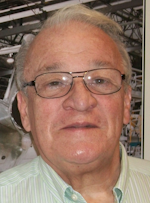As aircraft rely more and more on digital systems, maintenance issues for mechanics are evolving along with those changes. Clearly, avionics technicians have had to recalibrate their own skills to keep up with these changes. Yesterday’s electronics are not today’s microprocessors. And software skills are now as necessary as the right size screwdriver in maintaining these systems.
Dreamliner issues
But as issues with Boeing’s most recent digital aircraft – the Boeing 787 Dreamliner – point out, it is not just avionics technicians that are facing a new host of maintenance challenges as a result of the increasing use of digital technology to fly today’s aircraft. All mechanics working on these aircraft need to be aware of how these changes can affect the way they do their jobs.
For example, one of the issues regarding the new Boeing Dreamliner that caught my attention was the lithium battery fire on Jan. 8, 2013 at Boston’s Logan International Airport. The aircraft was parked at the gate and the passengers had all disembarked when cleaners noticed smoke in the cabin. The smoke was traced to a fire in a battery in the aft electric and electronics compartment.
Electrical systems, batteries, etc.
While the NTSB, FAA, and Boeing are still examining the cause of the fire, it is clear to me that mechanics are going to have to focus more of their attention on the electrical delivery systems of these aircraft. Powering the new digital features of these aircraft is compounded by the fact that the aircraft operating systems – such as the air conditioning, landing gear, flight controls, etc. – that were previously powered by hydraulic or pneumatic systems are now solely electrically driven. For example, the cabin pressurization system that was previously powered by bleed air from the engines is now solely powered by electric motor driven compressors.
These changes in new passenger jets have resulted in many benefits, including environmental and economic benefits from a decrease in consumption of fossil fuels, but they are also increasing demand on the aircraft’s electric power supply and distribution system. Mechanics working on these aircraft need to focus more attention on these systems as they have become even more critical to safe flight. So, for example, particular attention needs to be paid to electrical connections to make sure they are clean and secure. While this is nothing new, it takes on greater significance in an aircraft relying more heavily on electric power.
In addition, as the lithium battery fire at Logan reminds us, lithium ion batteries have a history of overheating and causing fires. This means that mechanics need to be vigilant in examining these batteries for any signs of overheating.
As we all know, the introduction of new aircraft always reveals new maintenance issues for mechanics. This has been true for my entire career as a mechanic and it continues to be true today. Mechanics working on these aircraft serve an invaluable function as the “eyes and ears” of the manufacturer – identifying potential issues so that they can be analyzed and corrected.
John Goglia has 40+ years experience in the aviation industry. He was the first NTSB member to hold an FAA aircraft mechanic's certificate. He can be reached at [email protected].



